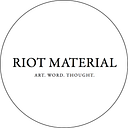Revisiting The Art-Life Balance In The Square
The new film, The Square (2017) is not marked by a tight plot; quite on the contrary it can be said to be built on vignettes, or even more precisely, by performances. Now, ‘performance’, of course, recalls Performance Art, the ‘movement’ that started out in the 1960’s; and as The Square is dealing with the contemporary art world, this connection is in no way accidental. Yet, the movie’s protagonist also explicitly refers to the work of Nicolas Bourriaud, who wrote extensively on the art of the 1990’s, which he differentiated from the issues and problems that were raised by the art movements of the past (cf. Bourriaud 2002: 7f.). He distinguishes the two in as far as Performance Art is following in the footsteps of avant-garde modernism, with its attempts to disrupt the standardised flow of our daily lives and to sketch out bold utopias with its manifestos; while for the Art of the 1990’s, or as he calls it, Relational Art, “the role of artworks is no longer to form imaginary and utopian realities, but to actually be ways of living and models of action within the existing real” (ibid.: 13). The Square opens up a discussion between these two conceptions of the role of art within society, the one leading up to the 60’s/70’s and the other starting out in the 1990’s, which are based on two different interpretations of what modernity is. Let us look at them separately and see what different forms they take within the movie.
a) Performance Art: The transfiguration of our daily lives
Performance 1. Christian (Claes Bang), the protagonist and a museum curator, is on the street, walking to work. Suddenly, a woman’s voice is heard, crying for help. After some moments of indecisiveness, he and another man halt and wait for the woman who runs towards them. With tears in her eyes, she tells them that a man is coming after her and asks them for protection; and sure enough, shortly after, a man runs towards her, which the two accidental helpers, who stand between him and her, prevent. The man seems to give up and walks away grudgingly, the woman thanks them, and the two men congratulate each other on de-escalating the situation. A few moments later, the punchline: Christian is missing his cell phone and wallet. What had happened a few moments earlier was but an act, a performance.
Performance 2.Clearly the most memorable scene of the movie is the one in the restaurant. It is the gala celebrating the opening of a new exhibition, and right before dinner starts, the guests are invited to witness an artistic performance. Standard routine. An announcer sets the setting of the performance: The jungle — “Soon you’ll be confronted by a wild animal. … If you show fear, the animal will sense it. … You can hide in the herd, safe in the knowledge that someone else will be the prey.” Entrance of the artist: A muscular and topless man on crutches, but not for support, rather to imitate the walk of a gorilla, which he has transformed into. The audience laughs at his ape-like sounds. The performer moves to a fellow artist, who is part of the audience, and starts teasing him, putting his finger into his ear or his napkin on his head. At first, the artist plays along, but it quickly becomes apparent that the performer goes too far; unable to stop the harassment, the poor artist is chased out of the hall. The audience becomes uncomfortable, so Christian tries to end the performance by presenting the performer and clapping. To no avail: The performer stays in his role and shuts up Christian and the clapping audience. At this point, everyone is just looking at their plates, the performer’s appearance, with his muscular body and heavy crutches, becomes menacing. He now starts harassing a woman, at first playing with her hair, then suddenly pulling her to the floor, in an act that can only be described as an attempted rape. At first, nobody reacts to the woman’s cries for help, but as soon as one man stands up and starts hitting the performer, other men rise, and start striking and kicking the artist, thus ending the performance.
To read the rest of Gerber’s analysis of The Square, go to Riot Material magazine: https://www.riotmaterial.com/square/
And please visit us on Facebook: https://www.facebook.com/riotmaterial/
